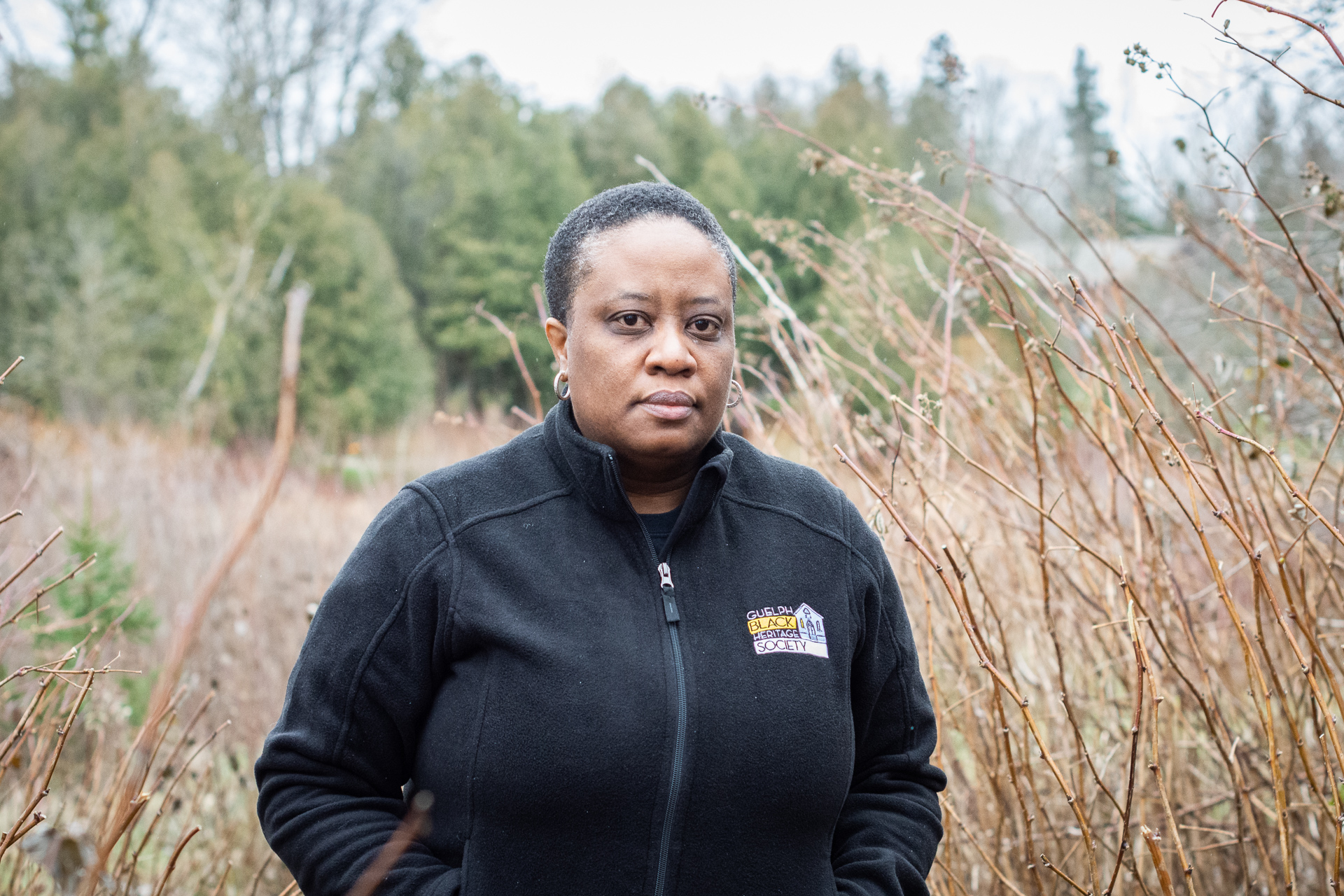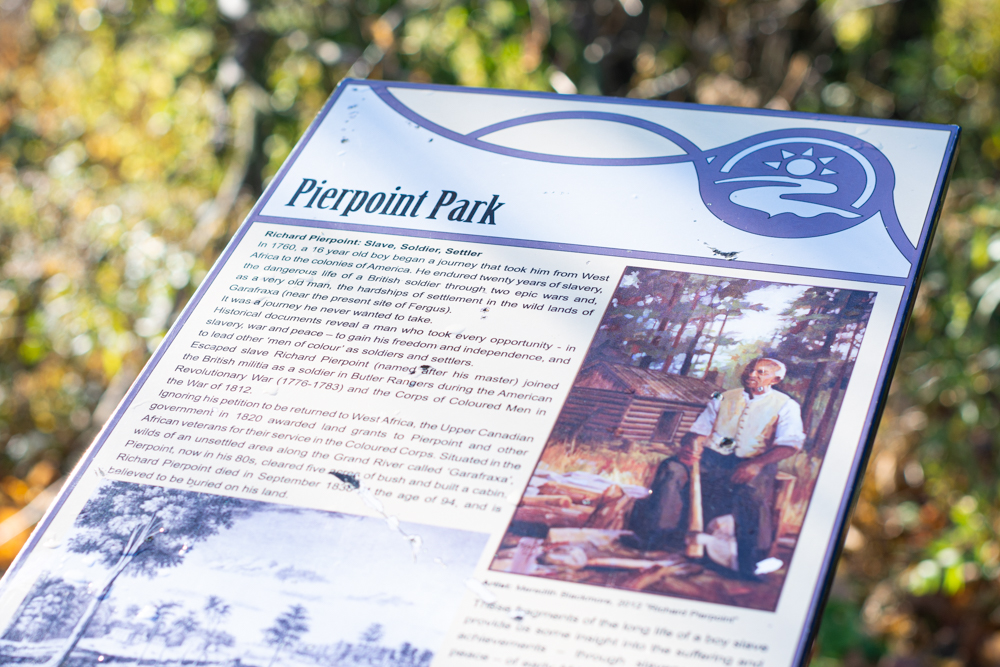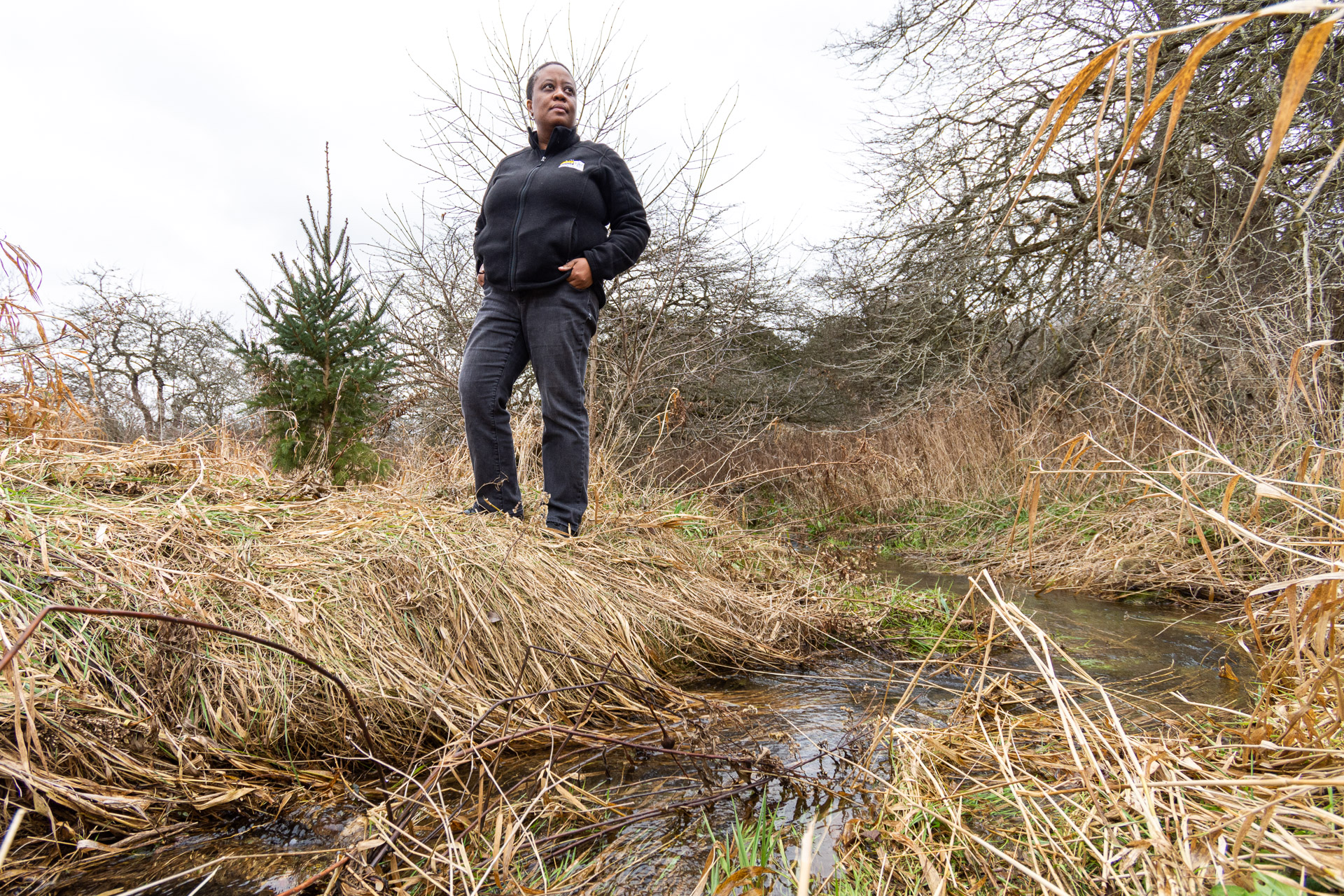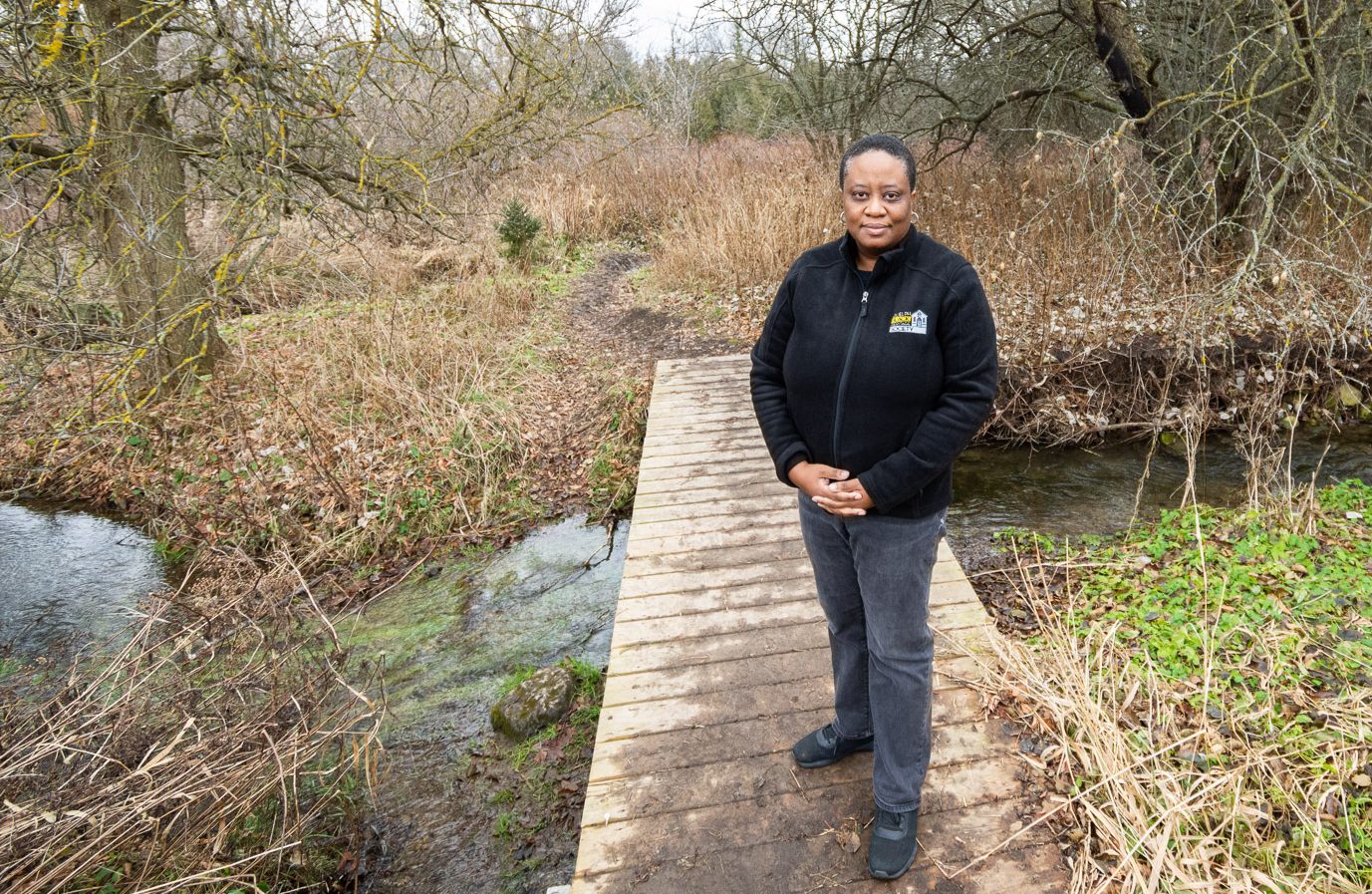FERGUS – Denise Francis carefully navigates a depression where December’s weather has gathered to form a soggy muck on a pathway through Pierpoint Park.
“I would use the term ‘park’ loosely,” the Guelph Black Heritage Society (GBHS) president said of the property that is named after, and once belonged to, Richard Pierpoint.
Francis points out there are no marked trails and only a small, dilapidated plaque commemorating Pierpoint’s life as an abducted slave, soldier who fought for Upper Canada and eventual free man late in his years.
The plaque, the only sign that Pierpoint once owned the property Francis and county residents now freely walk upon, is in an embarrassing state.
Leaning on an angle, it’s able to swivel and be pushed around. In fact, the sign post is no longer fixed in the ground – it can simply be lifted from its place and made away with.
“We’re like, ‘Wow … this is supposed to be a monument to somebody?’” Francis remarked. “He should be better remembered.”
Pierpoint’s story also isn’t one strictly of Black heritage, Francis said, but one of Canadian heritage as well.
Pierpoint was abducted in 1760 from what is now Senegal in West Africa before being sold as a slave to a British officer who named him Richard Pierpoint, taking on the officer’s own surname.
Pierpoint served the British Empire in Butler’s Rangers during the American Revolution in 1776 and, after returning to what became Upper Canada in 1791, following a British loss, Pierpoint found himself a free man for the first time in his existence.
But in 1812, at the age of 68, Pierpoint would again step up to the frontlines to defend the land.
He petitioned the government to create an all-Black unit called the Coloured Corps of Upper Canada and fought against the United States in battles across the Niagara Peninsula.
In 1822, at the age of 78, Pierpoint was granted 100-acres in modern-day Fergus (then Garafraxa) in a veteran’s land grant.

Denise Francis is concerned about plans for a bridge connecting Wellington Road 29 and Anderson Street in Fergus, which would run directly through Pierpoint Park. Photo by Jordan Snobelen
Pierpoint petitioned Upper Canada lieutenant-governor Sir Peregrine Maitland for return back to his West African homeland but was denied and settled on the granted land, of which a 10-acre portion makes up Pierpoint Park today.
Later in Pierpoint’s life, he passed the land on to another Black settler, Lemuel Brown.
Asked what happened with the land after it became Brown’s, Francis said she is unsure and pointed out an absence of readily available information on the county’s Black history.
What is known is Bob and Lynda Grant, who live on nearby Lamond Street, bought 25 acres next to their home in 1997. Part of the acreage contained what was Pierpoint’s property and the Grants donated it to Centre Wellington in 2010.
“We decided to donate 10 acres to the township, which gladly accepted it … there were a number of conditions that were put on that gift; one of which is that it would be left in a state of nature,” Bob previously told the Advertiser.
“It’s a peaceful place to kind of go for a walk and enjoy nature the way it should be,” he said at the time.

A plaque stationed at the Pierpoint Park entrance in Fergus details the history behind the park, once owned by, and named after, Richard Pierpoint. Photo by Jordan Snobelen
In addition to her calls for better signage and marked trails, Francis agrees.
The GBHS is concerned about the potential destruction of the land should a bridge one day be built across the Grand River, linking Wellington Road 29 and Anderson Street, as is suggested in Centre Wellington’s transportation master plan.
The potential for a bridge is also a point of contention among mainly white residents neighbouring the park who have formed the Pierpoint neighbourhood group in opposition to a bridge and the destruction of the park land.
The GBHS addressed a Nov. 8 letter to the county’s road committee chair Andy Lennox, outlining theirs and the neighbourhood group’s concerns with future bridge and road infrastructure that would almost certainly destroy the historically significant land.
Francis said the GBHS has “taken this on as our mission to see what can be done” – with the goal of getting more appropriate recognition of Pierpoint and his land.
Francis said she never learned about local Black communities growing up and attending school in Guelph – and the potential absence of Pierpoint Park would only perpetuate the problem.

Denise Francis (Photo by Jordan Snobelen)
“We’re trying to raise awareness of the issue that these edifices or areas of Black history should remain and should be actually better maintained and better promoted for history and Wellington County,” she said.
“It’s sad that this erasure of Black history is (happening) throughout Wellington County,” she continued, adding the county’s rich history, from the Black perspective, is not “acknowledged or recognized.”
Francis laments that Black settlements and places of significance to Black history in the county have been replaced by “fields of corn.”
And for that reason, she said, it’s “even more important” to preserve land known to have belonged to two Black settlers.
“We need to figure out what else can be done, and part of that, too, is bringing attention to it in the media,” Francis said.
“First we need to amplify the Black stories and the Black voices in the community so that people understand, ‘why is it significant, why is it necessary?’”




